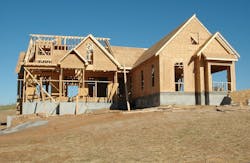Pandemic Exposed Deep Housing Issues, Says Harvard Report
The pandemic exposed the housing industry’s long standing shortfalls, and although construction ramped up to historic levels this year, there’s a long way to go. Harvard’s Joint Center for Housing Studies released its annual housing data report, “The State of the Nation’s Housing,” this week, which highlights the troubled foundations of America’s housing. The recent surge in construction will not be enough to close the housing gap in America, and the number of aging housing units are only getting more robust. Bloomberg reports aging rental units have a $45 billion repair backlog. Harvard’s report specified housing near jobs, affordable housing, starter homes, and racial inequalities are severe housing issues.
“The inequalities amplified by the Covid-19 pandemic remain front and center,” the authors state early in the report’s intro. Those include shortages of housing near jobs, affordable housing and starter homes, as well widening racial inequalities around ownership, access and wealth. The striking rise in home prices — sales of existing homes were up 20% on average from September 2020 through February 2021, and new single-family home sales rose 20.4% in 2020 — has brought immense increases in wealth to existing homeowners, who often took advantage of record-low interest rates to contribute to record levels of mortgage refinancing and slash their monthly payments. Meanwhile, desperate buyers saw the cost of a down payment soar. In effect, the Covid housing market comforted the comfortable; an “acute shortage of homes for sale” mirrored an explosion in second-home sales.
A Windfall for Some
Home prices went up by double digits in 85 of the 100 largest metro areas, creating wealth that propped up existing owners, said Daniel McCue, a senior research associate at the Harvard Joint Center for Housing Studies: Those trying to buy for the first time have that much further to climb. The average price-to-income ratio, a measure of an area’s median home costs versus its median income, hit 4.4 last year, the highest since 2006, with 23 markets hitting 5.0. In San Jose, that ratio stood at 10.9, the highest in the country.
